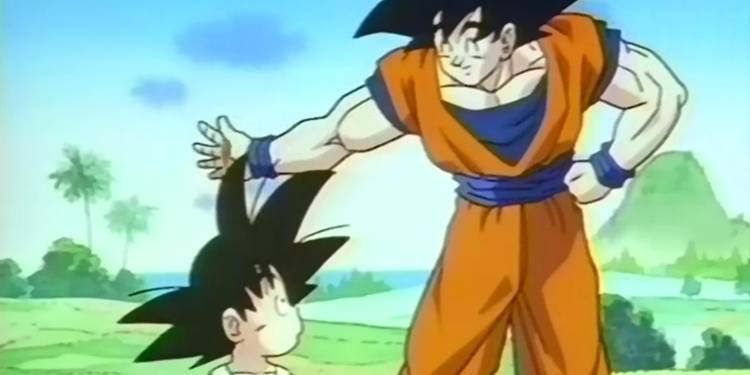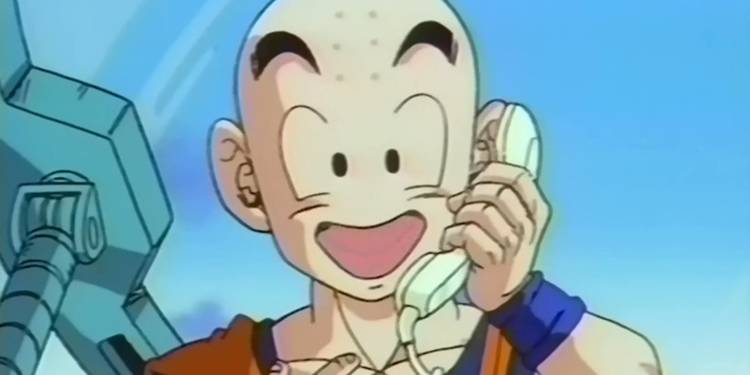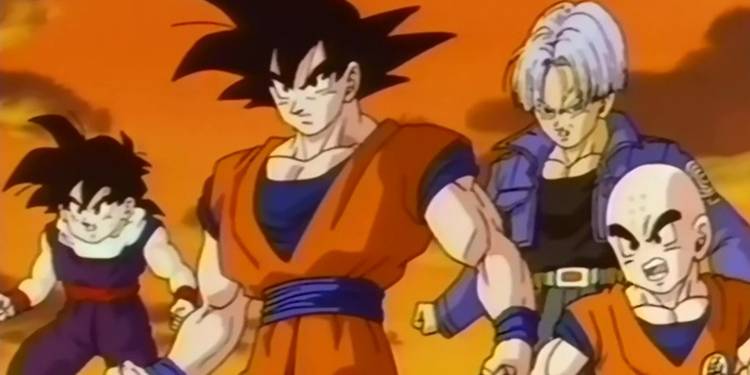
Despite its global popularity, Akira Toriyama’s Dragon Ball is no stranger to bizarre tie-in material that’s difficult to get ahold of nowadays. Various curiosities released during the franchise’s heyday have long been out of print, and are unlikely to see a rerelease for one reason or another.
One major example of this is Dragon Ball Z: Gather Together! Goku’s World, a direct-to-VHS animated special released in 1992. This OVA has never been released in another format – so what’s it all about, and what makes it unlikely to see the light of day again?
Adult Goku Meets Kid Goku and Nearly Destroys the Space-Time Continuum

Goku’s World sees Goku, Gohan, Krillin, Trunks and Bulma journey in Trunks’ time machine through the history of Dragon Ball. The group first emerges near the series’ beginning as Goku encounters his child-self and nearly pats him on the back until Trunks intervenes, warning that touching him would create a devastating time paradox. This actually contradicts Dragon Ball’s pre-established time travel rules, in which alterations to the past instead create alternate timelines — which is why Trunks and his prime universe counterpart have interacted with no ill effects.
With Goku’s encounter with his past self cut short, the group then jumps forward to the 21st World Martial Arts Tournament to watch the climactic battle between Goku and Jackie Chun. The fight is reanimated in what was then-Dragon Ball’s contemporary style, circa the Cell Saga, serving as one of the special’s highlights. As they watch the fight, Krillin remarks that Jackie Chun is actually Master Roshi, a fact never revealed to the characters in the original story. The multiple contradictions to the series present in Goku’s World indicate that its story shouldn’t be taken too seriously, and is mainly just an excuse to hang its main gimmick on.
Goku’s World Has the Heroes Call the Viewer to Answer Trivia Questions

That gimmick is a peripheral released by Dragon Ball’s merchandising company, Bandai. The ”Terebikko” is an interactive remote shaped like a telephone that plugs directly into the viewer’s VHS player. As Goku’s World progresses, the gang witnesses more battles like Master Roshi vs. King Piccolo, Goku vs. Vegeta, and the Z Fighters vs. Frieza. Intermittently, Goku, Krillin and Master Roshi call the viewer up, asking them various trivia questions about the events unfolding.
With the Terebikko’s buttons, viewers are able to answer these questions, although this has little effect on the progression of the story. Getting a right or wrong answer will simply have the characters remark on whether the viewer was correct before the special continues regardless.
There are a few more moments of worth, such as Gohan meeting Demon King Piccolo for the first time and being surprised at his mentor’s former villainy. The special ends with a tease of Perfect Cell, who was the current villain at the time of its release, and the Z Fighters briefly do battle with the android. When Cell uses the Afterimage Technique, the viewer can ”help” Goku by answering which is the real Cell, although once more this has no effect on the OVA’s events.
Does Goku’s World Really Mean Anything?

Ultimately, Goku’s World may have just been a marketing ploy to sell Terebikkos and promote the anime’s latest arc, which is the likeliest reason for why it hasn’t seen a release in another format. That doesn’t make the special completely worthless, though. The aforementioned meetings between Goku and his kid self — or Gohan and King Piccolo — are rewarding moments for longtime fans, and seeing old battles in a slightly newer style is an interesting look at what could have been had Dragon Ball started in the ’90s.
More than anything, though, it’s novel to see an older piece of Dragon Ball media examine the series’ legacy in this way. Dragon Ball’s original run is defined by constantly moving forward and rarely looking back. By the time of Goku’s World’s release, though, the series had been running in the pages of Shonen Jump for eight years, meaning a generation of fans had grown up with the series; seeing old events in a new context would have been a meaningful endeavor.
Nowadays, Dragon Ball Super doesn’t hold back in invoking nostalgia for its predecessors. Most franchise retrospectives only happen after the story in question has ended, so Goku’s World offered a unique opportunity for a series to look back while it was still contemporary — and when the idea of calling back to Dragon Ball’s storied past was a unique selling point rather than par for the course.